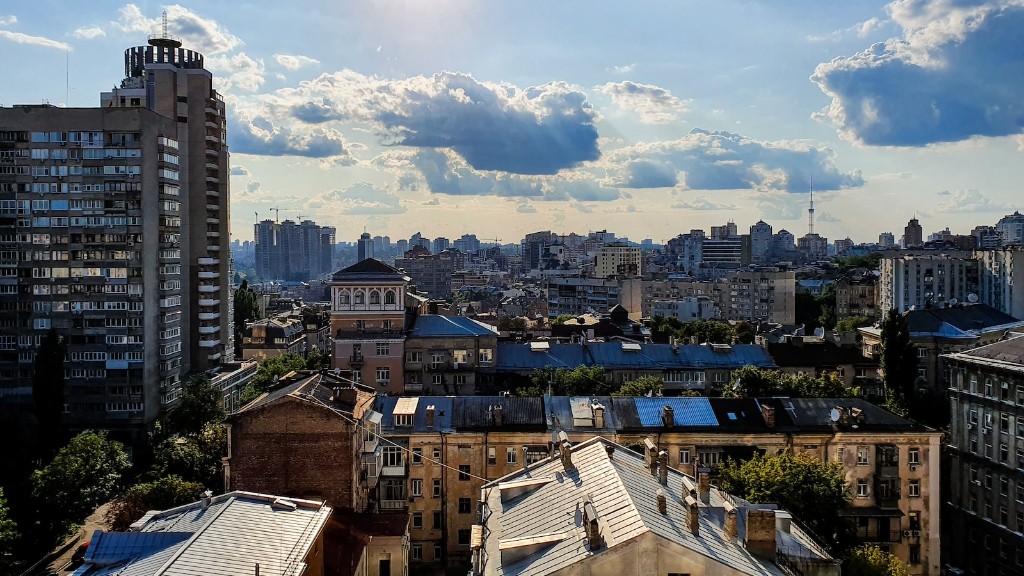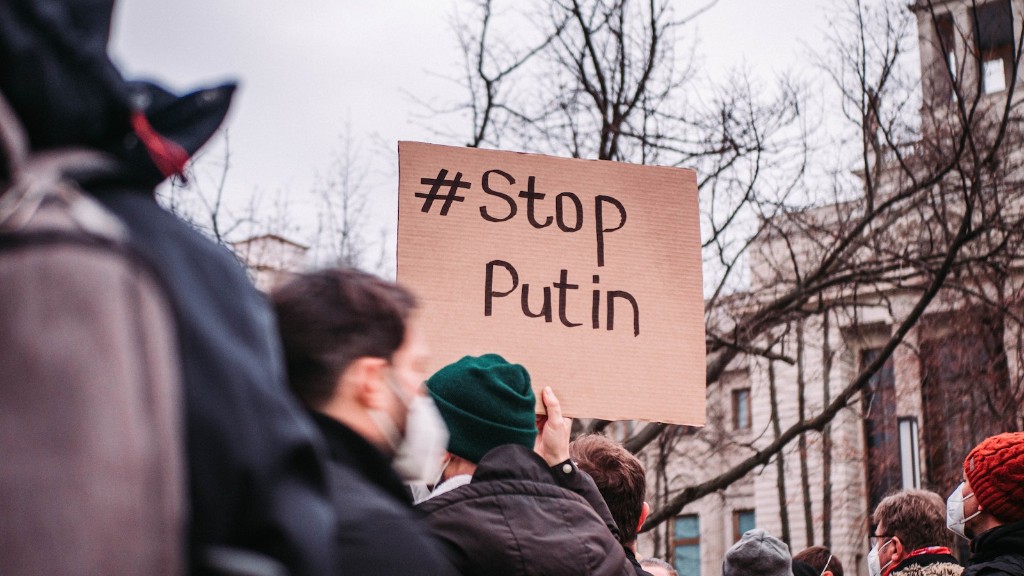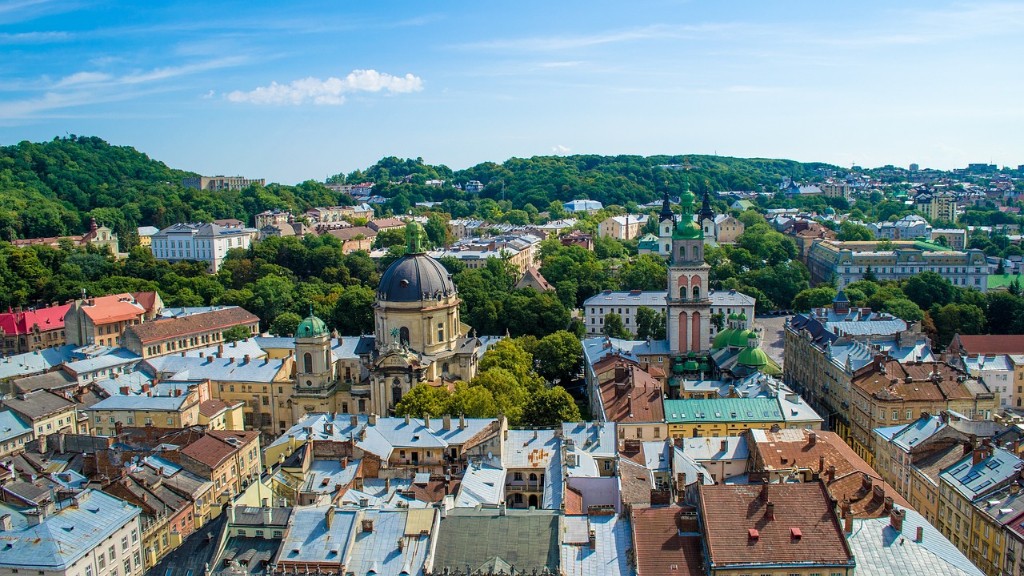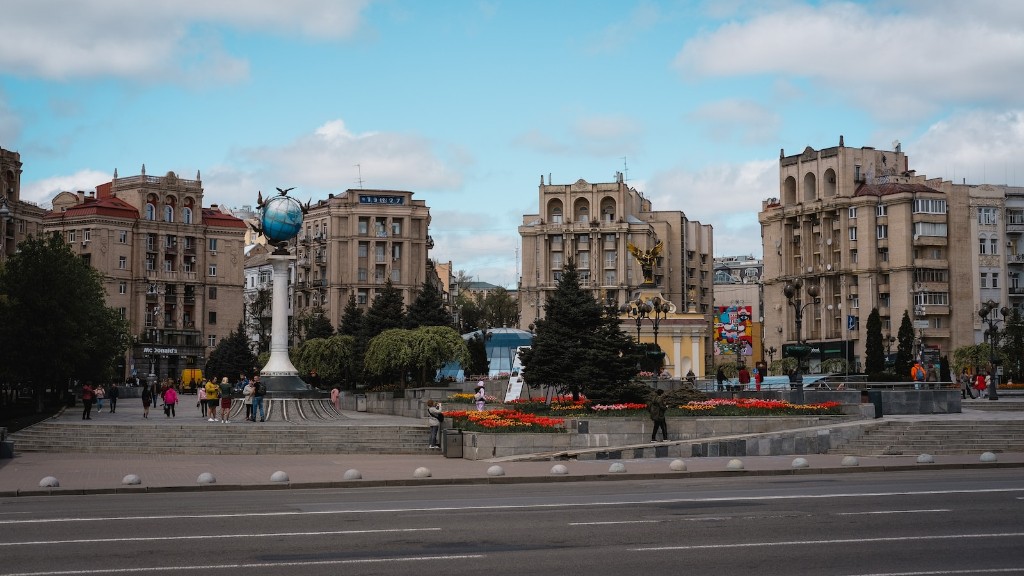Background of War in Ukraine
Ukraine has been in a state of civil war since 2014. The country’s government and pro-Russian separatists have been in a bitter conflict since that year over the eastern territory of the country. The UN estimates around 10,000 people have been killed over the past six years, with millions of people displaced by the war. International powers have tried to broker a peace deal, but no lasting agreements have been made yet. Ukraine is also involved in a military conflict with Russia, which annexed Crimea in 2014 and has since then assisted the separatist forces in the east.
The regional conflict has been fueled by international tensions over Russia’s aggressive expansionism and its support for the separatist forces. The US and EU have imposed several sanctions on Russia for its role in the war. As a response to these sanctions, Russia has cut off natural gas supplies to Ukraine.
The war in Ukraine has had devastating consequences for the country. Nearly 3 million people are still living in areas impacted by the conflict. This has caused an economic crisis, with more than 5 million people living in poverty and widespread unemployment. Public services and infrastructure have been damaged by the hostilities.
Bombs and Missiles in Ukraine
The war in Ukraine has showed no signs of easing. Bombs and missiles continue to be used by both sides of the conflict. Reports of airstrikes against population centers, residential homes, and important infrastructure have become increasingly common.
In 2018, a report from the United Nations (UN) revealed that more than 17,000 bombs and missiles had been launched in Ukraine. Of this total, about 10,000 were high-explosive bombs and missiles designed to target important infrastructure such as bridges, factories and power plants.
In addition to these bombs and missiles, both sides have also been using tanks and artillery. In 2018, the UN reported more than 3,000 tanks and artillery units deployed on the conflict zones. Reports suggest that many of these weapons are outdated Soviet-era weapons.
Effects on Civilians
The warfare in Ukraine has had a devastating effect on civilians. The UN estimates that between 5 and 8 million people are in need of humanitarian assistance. The conflict has caused widespread destruction of civilian infrastructure, displacement of people, hunger, and economic crisis.
The bombardment of civilian centers has had particularly devastating effects. A report from the International Crisis Group (ICG) revealed that over 2,400 civilians have been killed by bombs and missiles since the start of the war. Almost half of the deaths were caused by high-explosive weapons. The report also revealed that more than 6,000 civilians have been injured.
The ICG report also highlighted the risk of unexploded bombs and unexploded ordinances, or UXOs. These are bombs or missiles that have not detonated on their targets and are left on the ground. These UXOs pose a major threat to civilians, especially when they are located in civilian crowded areas. The report revealed that at least 100 civilians have been killed or injured by UXOs in the past six years.
International Response
The international community has so far been unable to stop the conflict in Ukraine. A peace deal was proposed by the Organization for Security and Cooperation in Europe (OSCE) in 2015, but the plan has not been implemented and the fighting continues.
The US and EU have imposed several economic sanctions against Russia for its support of the separatists and its annexation of Crimea. The US has also imposed some arms embargoes, banning weapons sales to the separatists. Other countries, such as Japan, have also imposed sanctions against Russia.
The UN has established an office to monitor the conflict and provide humanitarian aid to civilians. In 2017, the UN launched a three-year plan to address the humanitarian needs of the people affected by the conflict. To date, however, the UN has been unable to secure a lasting peace deal.
Analysis of War in Ukraine
The war in Ukraine is a complex and long-running conflict that has had devastating consequences for the country and its people. Bombs and missiles continue to be used by both sides of the conflict, which has caused death and injury of civilians. The tragic effects of the war are compounded by the destruction of civilian infrastructure and economic crisis.
The international community has failed to find a lasting solution to the conflict, but there are some limited efforts to provide aid to civilians. The US and EU have imposed economic sanctions on Russia in an attempt to pressure it into a peaceful resolution, but these efforts have been unsuccessful. The UN has tried to provide humanitarian assistance, but it has been difficult due to the ongoing violence.
It is clear that the war in Ukraine has had a devastating impact on the country and its people. It is important that the international community continues to work together to find a peaceful solution to the conflict.
Religion in Ukraine
The conflict in Ukraine has also taken a religious toll. The majority of people in Ukraine are Orthodox Christian, with a smaller portion of Ukrainian-speakers belonging to the Catholic Church. Ukraine’s religious landscape has been forever altered by the war, with some religious organizations reporting major drops in membership or leaving the country altogether.
The conflict has also increased tensions between Ukrainians of different faiths. There has been an increase in the number of instances of harassment or violence against individuals of different religious faiths. There have also been reports of the vandalizing or destruction of Orthodox churches and monasteries.
The conflict has also caused religious divisions within the country. Some religious groups are now divided along political affiliations, with many Orthodox believers allying themselves with the pro-Russian separatists.
Religious leaders in Ukraine have called for peace and reconciliation. They have also urged their followers to remain united despite their differences and to strive for peace. However, the escalating violence continues to create divisions and further polarize Ukrainian society.
Cultural Impacts of War in Ukraine
The war in Ukraine has had a profound effect on the country’s culture. Many of Ukraine’s cultural institutions, such as museums, libraries, and galleries, have been damaged or destroyed by the conflict. Cultural heritage sites have been destroyed or looted, while many historical monuments have been turned into military targets.
The war has also had a psychological effect on the population. Mental health professionals have noted an increase in symptoms of depression, anxiety, and post-traumatic stress. Thousands of people have been displaced from their homes, causing traumatic experiences and increasing the risk of mental health issues.
The conflict has also caused many Ukrainians to leave the country. Ukraine has become one of the top sources of refugees in the world, with more than 1.3 million Ukrainians leaving the country since 2014. The number of people fleeing the country continues to increase each year.
The war in Ukraine has had a profound effect on the country’s culture and heritage. It is important that the international community continues to provide support to Ukraine in order to help the country rebuild and recover from the conflict.
Economic Consequences of War in Ukraine
The war in Ukraine has left the country in an economic crisis. The conflict has had a devastating effect on the national economy, with a decrease in industrial production, a drop in exports, and an increase in unemployment.
A report from the World Bank estimated that the conflict has caused an economic contraction of over 18 percent since 2014. The prices of key commodities, such as oil, wheat, and steel, have also decreased due to the conflict.
The economic crisis has caused a dramatic increase in poverty levels in Ukraine. The World Bank also estimates that more than half of the population of the country is now living in poverty. This has caused a dramatic increase in the number of homeless people and a decrease in school enrollment.
The economic crisis has also had an effect on the national currency. The Ukrainian hryvnia has lost more than 60 percent of its value since 2014. This has caused inflation to skyrocket, which has had an effect on the prices of basic commodities.
The economic crisis in Ukraine has been exacerbated by international sanctions on Russia. These sanctions have caused a decrease in the inflow of foreign investment to Ukraine. This, in turn, has further weakened the Ukrainian economy.
The economic crisis in Ukraine has had a dramatic effect on the country and its people. It is essential that the international community continues to support Ukraine in order to help the country recover from the conflict.




